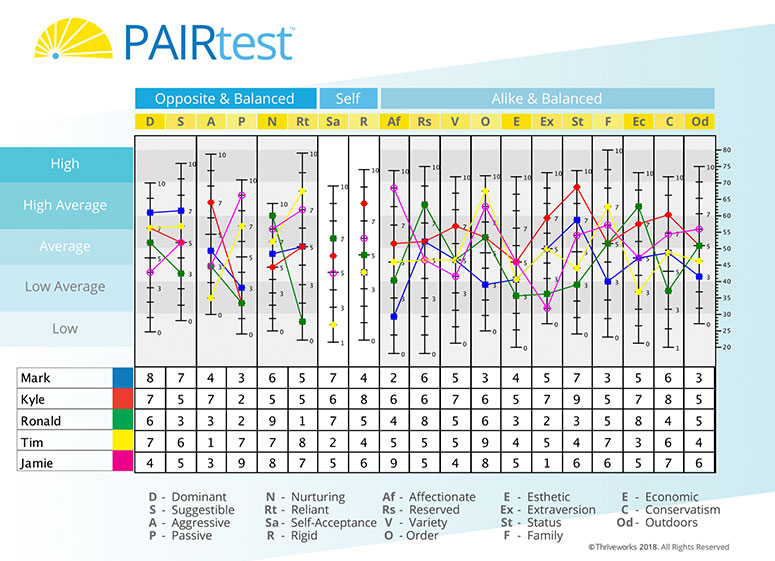What is the PAIR?
- Do Opposites really attract?
- What do you say when couples ask, "Are we compatible?"
- Is it better for persons in a relationship to be more or less similar?
- How much does one’s personality influence his or her relationships?
- Will this group of employees work well together?

Probably the most loathed answer to these questions is, "It depends!" And yet, that is often the best reply a coach, counselor, or other helping professional has to give.
The answer is complex. In some ways, opposites do attract. And in other ways differences have the potential to create conflict and relational strife. So much depends on the specific ways that persons are alike or different, and how each couple or group interprets and adapts to the differences (and similarities) in those around them.
The PAIR test helps you, the coach, counselor, or other helping professional, better answer the question “are we compatible” and provides you, and those you help, quantifiable insights into areas of likely relational harmony or conflict. Therefore, an integral part of your interpretation strategy will be to assist each individual, couple, or group attach appropriate meanings, values and understandings to their objective PAIR test results.
Overview
The PAIR test is a 190 item, true-false test that assesses 19 separate dimensions of interest, personality, behavior, attitudes and values.
- Status
- Rigid
- Family
- Extraversion
- Conservatism
- Aggressive
- Affectionate
- Economic
- Variety
- Dominant
- Nurturing
- Order
- Esthetic
- Passive
- Reliant
- Reserved
- Suggestible
- Outdoors
- Self-Acceptance
Appropriate use occurs in all situations where it is important to select or match two or more people to increase probability of psychological and relational function and compatibility, or with individuals to review individual personality features.
Primary applications for the PAIR Test include:
- Personality assessment for individual coaching or therapy
- Premarital compatibility assessment and coaching or counseling
- Marital assessment and coaching or counseling
- Industrial personnel selection and assignment for task or project groupings
- Selection assessment for groups
The primary use of the PAIR Test is in coaching, counseling, or corporate settings as an assessment tool for coaches, professional therapists, or trained administrators. The PAIR test gives the client and administrator specific trait and general overview perspectives, which are especially useful in the initial phase of the coaching or counseling process.
Many providers appreciate being able to administer either of these inventories at the initial phase, and again in the final stages of coaching or therapy. Areas of progress and growth in individuals and the relationship are thereby shown. The significant test-retest reliability assures the effectiveness of this intervention.
Sample PAIR Profile:

For more information on the PAIR, Contact us.
